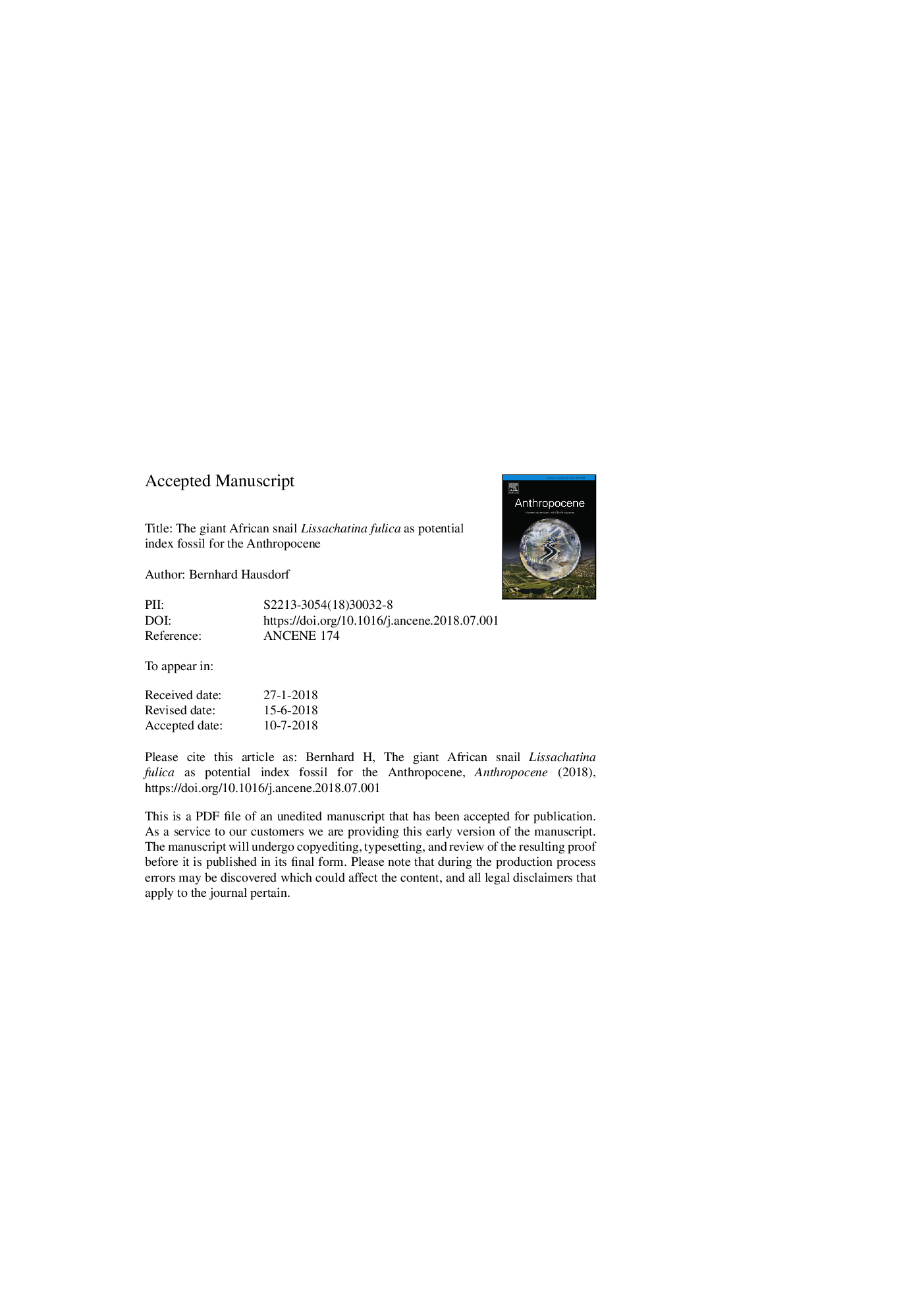| Article ID | Journal | Published Year | Pages | File Type |
|---|---|---|---|---|
| 8867160 | Anthropocene | 2018 | 15 Pages |
Abstract
The giant African snail Lissachatina fulica is potentially useful as an index fossil for the “Anthropocene” in tropical and subtropical non-marine sediments that also indicates human-modified environments. It originated in the coastal region of East Africa and has spread across the tropics and subtropics within the past 200 years. The increasing international trade and the accelerating transformation of tropical forests into agricultural lanscapes facilitated its rapid range expansion. Usually, its population density increases rapidly after establishment in a new area, so that remains of the large and robust shells will be traceable in suitable sediments. Because no other representatives of the Achatininae except the smaller Limicolaria have become established in the wild outside Africa, the shells of Lissachatina fulica can easily be identified in most of its circumtropical range and may help to rapidly assign tropical and subtropical, non-marine sediments to the “Anthropocene”.
Keywords
Related Topics
Physical Sciences and Engineering
Earth and Planetary Sciences
Atmospheric Science
Authors
Hausdorf Bernhard,
